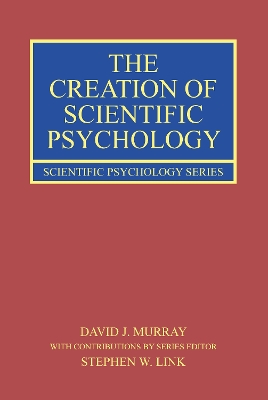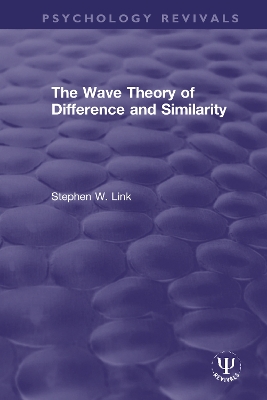Scientific Psychology
2 total works
The Creation of Scientific Psychology
by David J Murray and Stephen W. Link
With an emphasis on developments taking place in Germany during the nineteenth century, this book provides in-depth examinations of the key contributions made by the pioneers of scientific psychology. Their works brought measurement and mathematics into the study of the mind.
Through unique analysis of measurement theory by Whewell, mathematical developments by Gauss, and theories of mental processes developed by Herbart, Weber, Fechner, Helmholtz, Müller, Delboeuf and others, this volume maps the beliefs, discoveries, and interactions that constitute the very origins of psychophysics and its offspring Experimental Psychology. Murray and Link expertly combine nuanced understanding of linguistic and historic factors to identify theoretical approaches to relating physicalintensities and psychological magnitudes. With an eye to interactions and influences on future work in the field, the volume illustrates the important legacy that mathematical developments in the nineteenth century have for twentieth and twenty-first century psychologists.
This detailed and engaging account fills a deep gap in the history of psychology. The Creation of Scientific Psychology will appeal to researchers, academics, and students in the fields of history of psychology, psychophysics, scientific, and mathematical psychology.
Two experimental procedures prompted the empirical development of psychophysical models: those that measure response frequency, often referred to as response probability; and those that measure response time, sometimes referred to as reaction time. The history of psychophysics is filled with theories that predict one or the other of these two responses. Yet the persistent reappearance of empirical relationships between these two measures of performance makes clear the need for a theory that both predicts and relates these two measures. Most likely, both response measures are the result of a single process that generates empirical laws relating response time and response probability. It is this process — its theory, description, and application — that is the topic of The Wave Theory of Difference and Similarity. Originally published in 1992, the author of this book has set out to provide a theoretical foundation for formulating new theories that systematize earlier results and to stimulate new concepts and introduce new tools for exploring mental phenomena and improving mental measurement.

